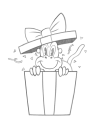Art of Caricature
Fundamental Skills(60 Lessons )
Build Your Caricature Muscles(71 Lessons )
Checklist
Memory Sketching
Caricature of a Caricature
Opposition Sketching
Spirit Animal
Digital Paint Sketching
Studying the Masters
Shape Design and Facial Features
Conclusion
Bonus Content
Give a gift
Give a gift card for art students to use on anything in the Proko store.
Or gift this course:

About instructor
Freelance commercial illustrator and caricature entertainer. He’s done a lot of editorial and product illustration and concept work for film and TV.









Assignments
To complete the assignment for this lesson, select a good large photo of a subject you want to draw – or take a caricature rough sketch you did earlier in the course and follow my steps to create a finished drawing like I did here. But do the whole face. Not just one feature. This one should take you a while because you need to slow down and focus on the craft of drawing, more than you have in any of the previous lessons. Make me proud and post your finished drawings to the Proko Caricature group on Facebook for a chance to be included in the final critique video.